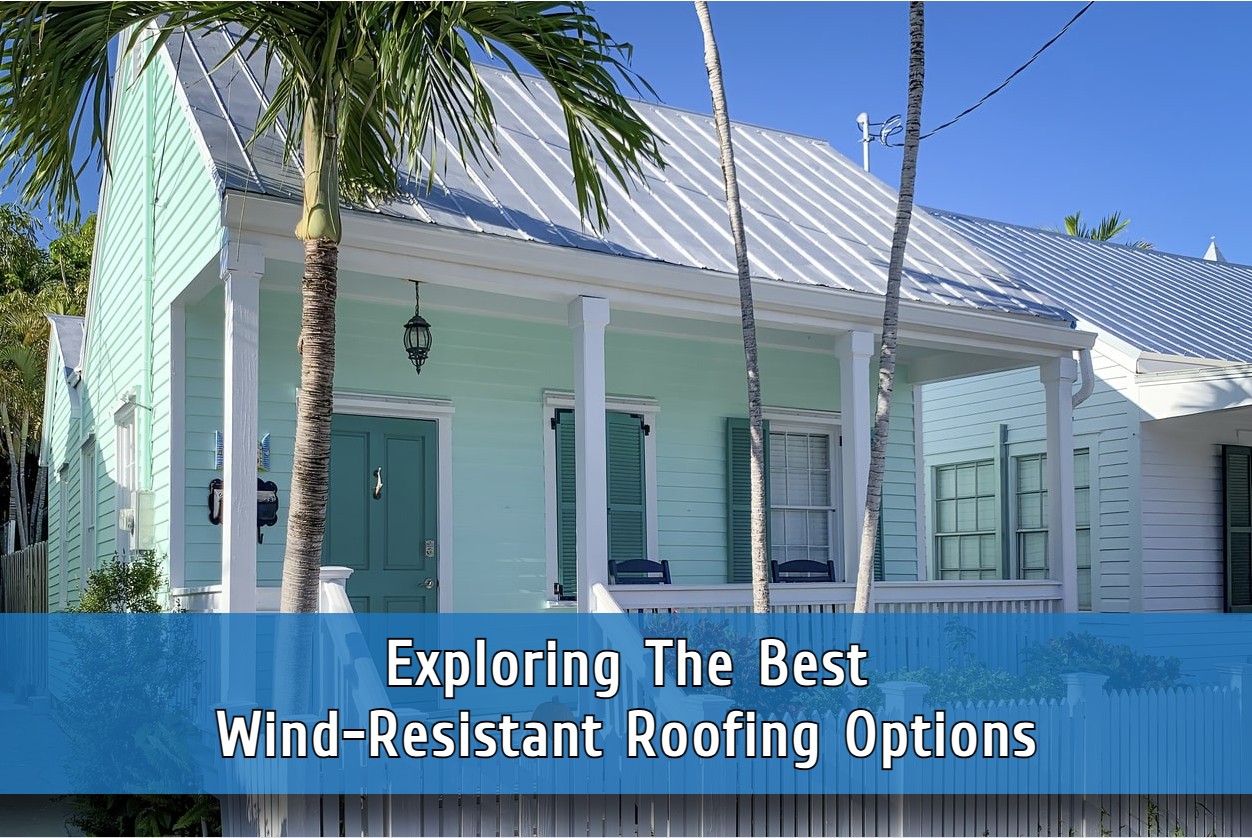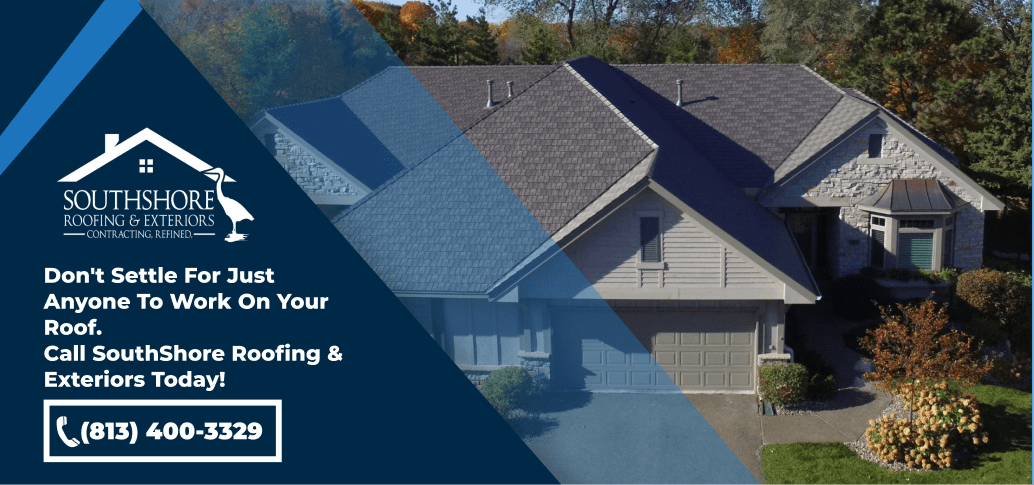Living in areas prone to high winds, such as near coastlines or in open plains, necessitates a special consideration for building materials, especially when it comes to the roof. Selecting the best roofing material for high winds is not merely a matter of preference, but also a crucial decision for safeguarding your home against the forces of nature. Roofs act as the first line of defense when violent storms strike, and their ability to withstand these conditions can mean the difference between minor repairs and catastrophic damage.
Different roofing materials vary significantly in their resistance to wind. While some may offer enhanced appearances and cost-effectiveness, they might not hold up well against high-velocity winds, posing risks not only to the structural integrity of the building but also to the safety of its occupants. Understanding the types of materials that are wind resistant, how to read wind ratings, and how to install roofing materials for enhanced wind protection, are all important in order to keep your roof lasting for years to come.
In this blog post, we’ll discuss all that and more, helping you choose a roof that not only meets your aesthetic desires, but one that also stands firm when the winds rise.
Understanding Roofing Material Wind Ratings
When choosing the best roofing material for high winds, understanding how to read wind ratings is vital. This rating, often determined through rigorous testing, indicates how well a roofing material can withstand high winds. The wind resistance of roofing materials is typically classified into different classes, with Class D, G, and H representing varying degrees of durability against wind forces.
To break it down even further, Class D shingles are rated for wind speeds up to 90 mph, while Class G is rated for up to 120 mph, and Class H is rated for up to 150 mph. As you can see, Class H is the highest rating, and it’s recommended for areas frequently hit by severe weather conditions, such as hurricanes.
To interpret these ratings effectively and apply them to your situation, it is important to consider the specific wind challenges that your location faces. For residents in hurricane-prone zones, for example, opting for hurricane-resistant roofing options is crucial. These materials are tested not only for their ability to resist high winds, but also their capacity to maintain integrity and protection against wind-driven rain. Materials like metal, certain types of asphalt shingles, and reinforced synthetic tiles are also known to have high wind ratings and are among the best types of roofing materials to install in stormy areas.
Understanding these ratings helps in making an informed decision, ensuring that the roofing material you choose will provide the necessary resilience and safety for your home. The right choice in wind-resistant roofing materials significantly reduces the risk of damage during storms, leading to longer-lasting protection and reduced repair costs over time.
Top Choices for Hurricane-Resistant Roofing Materials
An essential consideration for homeowners in regions vulnerable to hurricanes is selecting the best roofing material for high winds. The resilience of a roof during a hurricane can substantially reduce property damage and enhance safety. In this section, we discuss various materials known for their ability to handle hurricane conditions and compare their effectiveness based on recent storm data and research.
Among the leading hurricane-resistant roofing options, metal roofs stand out due to their superior durability and ability to withstand extreme wind speeds. Metal roofs are often rated for wind speeds of up to 140 miles per hour. Similarly, modified bitumen and rubber slate are other wind-resistant roof materials that offer commendable protection. These materials not only resist high winds, but also provide excellent waterproofing, which is critical during intense rainstorms associated with hurricanes.
Research and storm data analysis reveal that tile roofs, while heavy and seemingly sturdy, can be susceptible to uplift if the tiles are not installed with proper reinforcement. On the other hand, asphalt shingles, if chosen correctly, can offer a balance between cost-effectiveness and wind resistance, particularly ones that meet the highest wind rating.
Ultimately, the best roofing material choice for you involves weighing factors like material durability, installation quality, cost, and aesthetic preference. For homeowners in hurricane-prone areas, investing in a durable roof that can handle high wind areas is crucial for long-term protection and peace of mind.
Installation Techniques to Enhance Wind Resistance
To ensure the highest level of wind resistance, it’s important to properly install roofing materials. Employing the best practices for installation can significantly enhance a roof’s ability to withstand high winds, a vital consideration in wind-prone areas. This involves meticulous attention to detail, from securing the roofing underlayment to installing and aligning shingles, tiles, or other hurricane-resistant roofing options.
One common mistake that can compromise a roof’s wind resistance is inadequate nailing. Shingles must be nailed down properly and in accordance with the manufacturer’s guidelines to prevent them from lifting during high winds. It’s also essential to ensure that the edge of each shingle is securely fastened, as the edges are often the most vulnerable in strong winds. Another recurring issue is improperly aligned shingles, which allows for gaps that let wind and rain enter the roofing system, leading to potential damage.
To avoid these pitfalls, it is advisable to work with experienced roofing contractors who specialize in wind-resistant materials and are familiar with the best techniques for installation. Additionally, selecting roofing materials with high wind ratings is a proactive way to ensure durability. By understanding and addressing these common installation errors, homeowners can better protect their property against the destructive force of high winds.
Maintenance Tips for Long-Term Durability in Storm Areas
For homeowners living in regions prone to severe weather conditions, maintaining a wind-resistant roof is critical for long-term durability and safety. Regular maintenance ensures that the best roofing material for high winds continues to protect your home efficiently. Key maintenance practices include periodic inspections, especially after major storms, to identify and address any damage or vulnerabilities.
It is also a good idea to schedule professional roof inspections at least twice a year. During these inspections, experts will look for signs of wear and tear, check for loose or missing shingles, and ensure that seals and flashing are intact. Such proactive measures help preserve the integrity of hurricane-resistant roofing options and other wind-resistant roofing materials.
Homeowners should also keep an eye on the materials’ wind ratings, ensuring that any replacement materials meet the required standards for wind resistance. Regularly cleaning gutters and downspouts is also essential to prevent water damage and maintain the effectiveness of your roof in storm conditions. By following these scheduled checks and maintenance procedures, you can extend the lifespan of a durable roof in high-wind areas and reduce the likelihood of costly repairs or replacements in the future.
Choosing the Right Roofing Contractor in Tampa, FL
When it comes to installing a wind-resistant roof in Tampa, FL, selecting a knowledgeable and experienced contractor is crucial. The right contractor will not only provide you with the best roofing material for high winds, but will also ensure that the installation is done correctly to withstand the harsh weather conditions frequently experienced in the area.
Before finalizing a contractor, it’s important to ask several key questions: How long have they been in the business? Do they have experience with hurricane-resistant roofing options and other wind-resistant roof materials? Can they provide local references or examples of previously completed projects? These questions will help you gauge their expertise and reliability.
Additionally, ensure that the contractor is licensed and insured in Florida. This protects you from any liability in case of accidents and guarantees that the roofing work complies with local building codes. You can also try to discuss the wind ratings of the products they use and the best types of roofs for stormy areas that they recommend. This can provide insights into their proficiency and attention to detail.
Choosing the right roofing contractor is as important as selecting the material itself. With the right professional, you can rest assured that your roof will be durable and capable of protecting your home against high winds and severe weather conditions.
Install A Durable Wind-Resistant Roof With The Team at SouthShore Roofing & Exteriors.
When it comes to safeguarding your home against high winds, SouthShore Roofing & Exteriors is your trusted partner. Our experienced team specializes in installing hurricane-resistant roofing options that provide unparalleled protection. Don’t leave your home’s safety to chance. Contact SouthShore Roofing & Exteriors today at (813) 400-3329 to discuss how we can help you!




